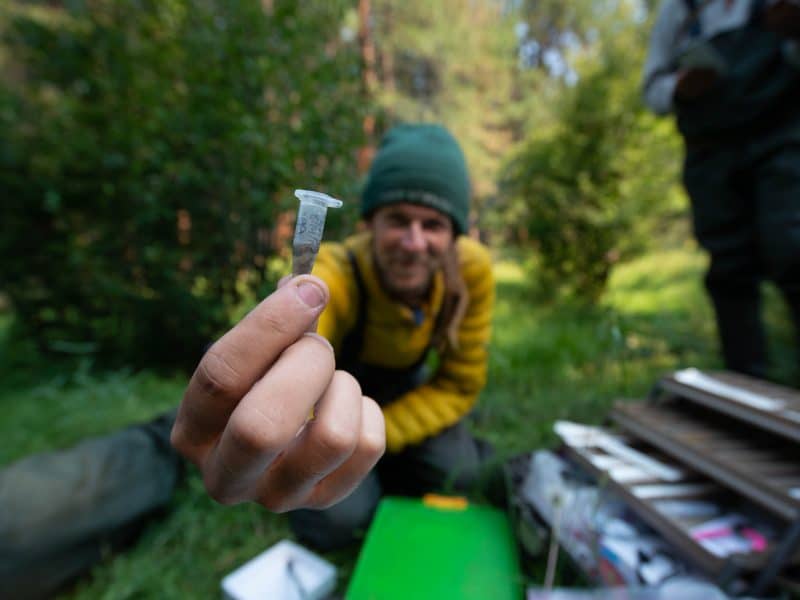Our key initiatives
We have six foci, which are often interrelated and overlapping (project titles are italicized). Please see our Products page for publications.

1. Developing new tools for studying wildlife
- Species from Feces: A tool for genetically identifying species and their diet from feces
- DNA sequencing and analysis in remote field locations for real-time answers
- Track plating to detect endangered species with unique footprints
- Environmental DNA from water, soil, and flowers to identify target taxa
- Flexible and scalable unmanned aerial systems for field-based scientific research
2. Environmental DNA
- Environmental DNA short fragment qPCR assay to detect New Mexico jumping mouse (Zapus hudsonius luteus) DNA on streamside vegetation
- Environmental DNA metabarcoding assay to detect bats from water sources
- Environmental DNA metabarcoding assay for determining aquifer flow in the Grand Canyon
- Environmental DNA metabarcoding and qPCR assays for detecting the Mexican long-nosed bat (Leptonycteris nivalis) from flowers
3. Emerging diseases and zoonotics
- SARS-CoV-2 (Covid-19) detection in wildlife
- Assessment of non-traditional sample types for rabies surveillance
- Rabies in an urban interface
- Assessment of risk of caves and mines to White-Nose Syndrome in US national parks
- Transmission dynamics of viral, bacterial, and fungal pathogens in bats
- Tracking Escherichia coli infections of the endangered New Mexico meadow jumping mouse
4. Natural and human perturbations (fire, wind energy, mining) that impact bats
- Bats in Burns: Response of Chiroptera to wildfire in high elevation forests
- Bat responses to different gate structures at mines
- Bat use of uranium mines
- Bat assemblages in Arizona’s potential wind energy areas
5. Focal species for conservation
- New Mexico meadow jumping mouse: Habitat modeling and metagenomic diet analysis
- Spotted bat (Euderma maculatum) population genetics across time and space
- Diet of Nicaraguan bats
- Southern hairy-nosed wombat longevity and space use over 20 years
6. Ancient DNA
- Sequencing and analysis of historical human DNA
- Sequencing DNA of spotted bat mummies
- Microbial communities in mammoth, ground sloth, and ancient bison dung
- Valley Fever in 8,500-year-old bison from Nebraska
- Using DNA from lake sediment and permafrost to identify ancient and historic fauna and flora

